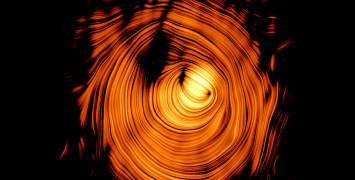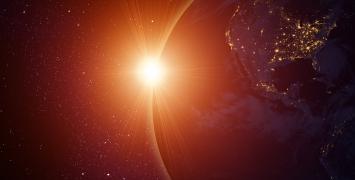Lost and found in the largest structures of the universe
On a clear summer night, look up to the sky and what do you see? Ordinary matter such as planets, stars maybe even an asteroid. Millions of little specks, as far as the eyes can reach. This ordinary matter, also known as baryonic matter, is the primary observable component of our universe. But is what we see all that is out there?

Resolving the mystery of hidden Baryonic matter has puzzled astrophysicists and cosmologists for decades, until now. Researchers have calculated that 40% of our universe's ordinary matter could lay hidden, in some form that remains impossible to observe with a telescope. Thanks to ERC funding, Dr Nabila Aghanim and her team may have just found back part of the elusive baryonic matter that makes up our own world.
The universe appears in the form of a giant spider’s web. This cosmic web is made of nodes – clusters of galaxies - connected to each other by filaments and walls. The dark matter is the "skeleton" from which ordinary matter flows and eventually aggregates in particles astrophysicists call baryons, creating stars and galaxies. These baryons in a cold/dense state represent less than 10% of the total of the observed matter found inside galaxies. Hot ionised hidden baryons continue to pose one of the most intriguing and unsolved enigmas in astrophysics and cosmology. Theories and simulations predict that most of the missing baryons are in a web of hot, diffused gas between the galaxies called a warm-hot intergalactic medium (WHIM).
The relatively low signal from hot ionised baryons in less dense objects and the lack of high-quality data covering large areas of the sky makes the study of hidden baryons extremely challenging. With her ERC grant ByoPiC, Dr Aghanim wants to provide a completely new picture of the cosmic web by detecting, mapping and assessing the physical properties of the hot ionised baryons.
With her team at the CNRS, she recently reported on the first statistically meaningful joint analysis of mapping data of the sky provided by the European Space Agency (ESA) Planck Satellite. The team has found tangible evidence of the warm-hot gas that the researchers believe could account for 50% of the 'hidden' or 'invisible' matter.
Their result relies on the statistical analysis of a large sample of about 600 super-clusters, the largest objects in the universe, detected in galaxy surveys. By stacking the signal from the 600 super-clusters, hence making optimum use of the spatial and physical connection between the cold and hot baryons, they recovered all information contained in the Planck data and detected half of the hidden baryons in the cosmic web. The publication is a first step towards an integrated analysis of data to reconstruct the cosmic web as traced by both hot ionised baryons and galaxies.
Dr Aghanim and her team hope that their future research will help to shed new light on the hot ionised gas content of the cosmic web, its distribution and physical properties.
Biographie
Dr Nabila Aghanim is an astrophysicist specialised in cosmic microwave background at the Centre National de la Recherche Scientifique (CNRS). She holds a PhD in physics and, since 2010, is a research director at the CNRS. For over ten years, Dr Aghanim coordinated the team responsible for the exploitation of data from ESA’s Planck mission. Since 2011, she is part of the development of the Euclid satellite, to be launched soon, to answer questions about dark energy.





